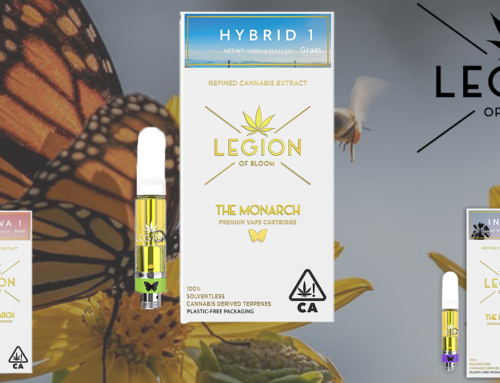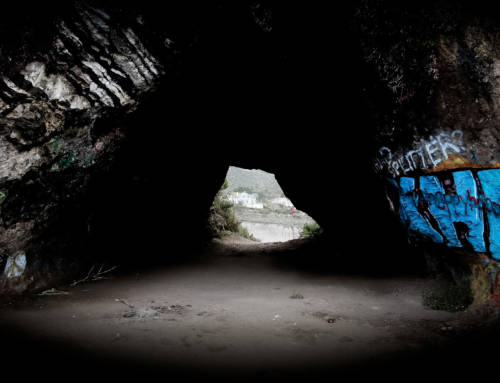Budder vs Badder
Budder vs Badder, what’s the difference? Concentrates used to be niche products made by a handful of adventurous producers. They can now be found in all good dispensaries and are a standard go-to product for people who enjoy products with high THC content. There are many types of concentrates you can choose from. Shatter, sauce, live resin, crumble, RSO, budder, and badder are just some of the examples.
While it is usually quite easy to tell them apart, people often struggle with understanding the difference between Budder and badder. Contrary to common belief, there is more to it than just the difference in spelling. Get yourself comfortable because we are about to do a deep dive into the world of budder and badder. Enjoy the ride!
Are All Concentrates The Same?
The short answer is no, they are not. To an inexperienced user, most concentrates will look alike. But looks can be deceiving, and that is most certainly the case here. The most significant differences between various types of concentrates is consistency, flavor, and the technique used to make them. While (especially compared to dry flowers), they do differ in taste, THC content, and how they are produced.
Let’s take live resin and Rick Simpson Oil as two examples. Live resin can only be produced using a very complicated and technical procedure that involves freezing fresh flowers before the extraction process. This technique allows for an extremely high amount of terpenes to be preserved. This creates a taste very close to that of the natural flavor of the cannabis strain of choice.
In contrast, RSO is produced using a solvent and is known not for its flavors. Mainly for its extremely high potency, topical use, and DIY approach popularized by its founder.
The more of a cannabis connoisseur you are, the more particular you will be about your preferred type of concentrate.
Budder vs Badder and the Similarities
They are made using the same technique. In both cases, a chemical solvent is used to extract THC and other cannabinoids from cannabis. After the extraction is done, cannabinoids are purged at a carefully monitored temperature while at the same time being whipped. The whipping process is slightly similar to the one used in butter production but on a much smaller scale.
The details of how the whipping process is done will determine the “fluffiness” and consistency of the concentrate.
They can be consumed the same way. Most users will opt for dabbing. This will require the use of equipment designed specifically for dabbing concentrates: a water pipe (often called a dab rig) and a Nail to heat your concentrate.
Another option is to vape it. To do so, you will need a concentrate-friendly vape pen with a special heating chamber compatible with cannabis concentrates.
Most dabbing tools will come with a scooping tool to make it easier for you to move your concentrate from the original packaging into the chamber or the Nail.
While some people smoke their concentrates, we advise against that. Sprinkling concentrates over your flower-filled joint or blunt is inefficient. Exposing cannabis concentrates to high heat in a very short period of time will most likely destroy the active ingredients which were so carefully captured in the product. It will also be an extremely messy process resulting in not the most pleasant experience.
They Both Contain High Levels Of THC
One of the main reasons experienced users love concentrates is that they are highly potent. Both Budder and Badder are no exception.
Budder and Badder will contain anything between 60- 85% of THC content. This is something to be aware of when you use it for the first time. But it is also something to look forward to, especially if you enjoy an intense THC-high, which can be felt instantly throughout your whole body.
They Have A High Amount Of Terpenes
While Live Resin is by far the tastiest concentrate, Budder and Batter are a very close second. When produced correctly and with care, they will contain high amounts of terpenes, which are responsible for the unique and delicious cannabis flavors that we have grown to love so very much.
Remember, the taste of the concentrate will be influenced by what strain was used in the making process. If there are particular strains you enjoy, try to find Budder or Badder made from those strains.
They Have To Be Stored The Same Way
Both concentrates have to be stored in a dark and cool space. The packaging they come in needs to be closed and sealed tight after every use, no exceptions. Improper storage will lead to a change of color (the concentrate will most probably get darker) and a change in consistency (the concentrate will become harder). Storing Budder and Badder incorrectly will result in a less pleasant user experience and make the product less potent.
Budder vs Badder and the Differences
The main difference between Budder vs Badder is their consistency. Budder will have a creamy and smooth texture resembling butter or cake frosting. Badder, on the other hand, will be less solid, resembling cake batter.
If you had to put both on the concentrate consistency scale, Budder would be closer to crumble, while Badder would be closer to Oil and Sauce.
An easy way to remember the difference between the two is to replace the “d” with “t” so they become butter and batter. This simple trick will make it easier for you to distinguish the two when looking at a selection of concentrates online or at your local dispensary.
Does it Really Matter Which One You Buy?
If you are a concentrate aficionado, everything matters. If you are an occasional user, there is no need for you to worry about the differences between the two.
The differences between Budder and Badder are so small many producers consider the two words interchangeable. It is often a matter of branding and personal preference.
Some might argue that Budder is the only correct term. This school of thought is based on the fact that the man who claims to be the inventor of the Buddermaking technique (BudderKing) called his concentrate Budder. Fun fact: he actually wanted to call it “Butter,” but the Canadian government refused his trademark request. As a compromise, he settled for the second-best word he could come up with, “Budder.”
While BudderKing might have popularized his Budder-making technique, many cannabis producers have since added their own spin to it, resulting in Budder and Badder made by different producers to vary in taste and texture.
Are Budder and Butter The Same?
While Budder is also often referred to as Butter, it is essential to note that this is not at all the same as a Cannabutter. Mistakenly using it as such might cause a very unpleasant high. So if you are on the hunt for Cannabutter, make sure you do not accidentally purchase Butter concentrate. Alternatively, if you can’t find any Cannabutter you can always consider making your own!
Takeaway
Budder and Badder are highly potent cannabis concentrates known for their great taste and relative ease of use.
While some producers will use the two terms interchangeably, there are slight differences between them, the main one being the texture.
Budder has a slightly firmer, although still very smooth, texture (similar to butter), while Badder is a little more oily and loose, with a texture similar to that of cake batter.
While Budder can also sometimes be called Butter, it is important not to mistake it for Cannabutter. Cannabutter is a type of edible, often used for baking and cooking. Cannabutter is not a concentrate and is usually much less potent than any concentrates available on the market.
Both Budder and Badder are very high in THC content and have to be consumed with caution by first-time users. But if you are an experienced cannabis user who is venturing into concentrates for the first time, adding Budder or Badder to your collection is a must!

